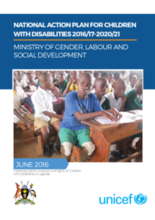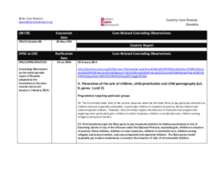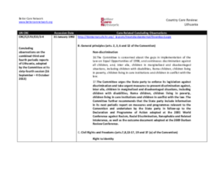Displaying 881 - 890 of 1787
This article examines how the voluntary care order differs in practice from the involuntary one and how voluntarism and involuntarism are represented in these two types of care order.
Compared to children in other placements, there is much less known about the characteristics and needs of children in the UK who are returned to their birth parents with a care order still in place.
Maxim’s story illustrates the problems with institutional care and the stagnation often seen in the child protection system.
The aim of the National Action Plan is to encourage government and other children’s rights actors to adequately plan for and respond to the holistic needs and aspirations of CWDs in Uganda.
This country care review includes the care-related Concluding Observations adopted by the Committee on the Rights of the Child and the Committee on the Rights of Persons with Disabilities.
This country care review includes the care-related Concluding Observations adopted by the Committee on the Rights of Persons with Disabilities.
This country care review includes the care-related Concluding Observations adopted by the Committee on the Rights of Persons with Disabilities.
This country care review includes the Concluding Observations for the Committee on the Rights of the Child and the Committee on the Rights of Persons with Disabilities.
This presentation from Nicholas Banda, given at the Zambia National Consultation to Accelerate Care Reform, outlines Zambia’s vision for child policy, covering child survival rights, child development rights, child protection rights, monitoring and evaluation, and institutional framework and implementation.
This presentation from the Zambia Law Development Commission, given at the Zambia National Consultation to Accelerate Care Reform, describes the Zambia Law Development Commission and its work, provides an overview of the legal framework supporting child care in Zambia, and highlights potential or pending legislation related to children’s care.








